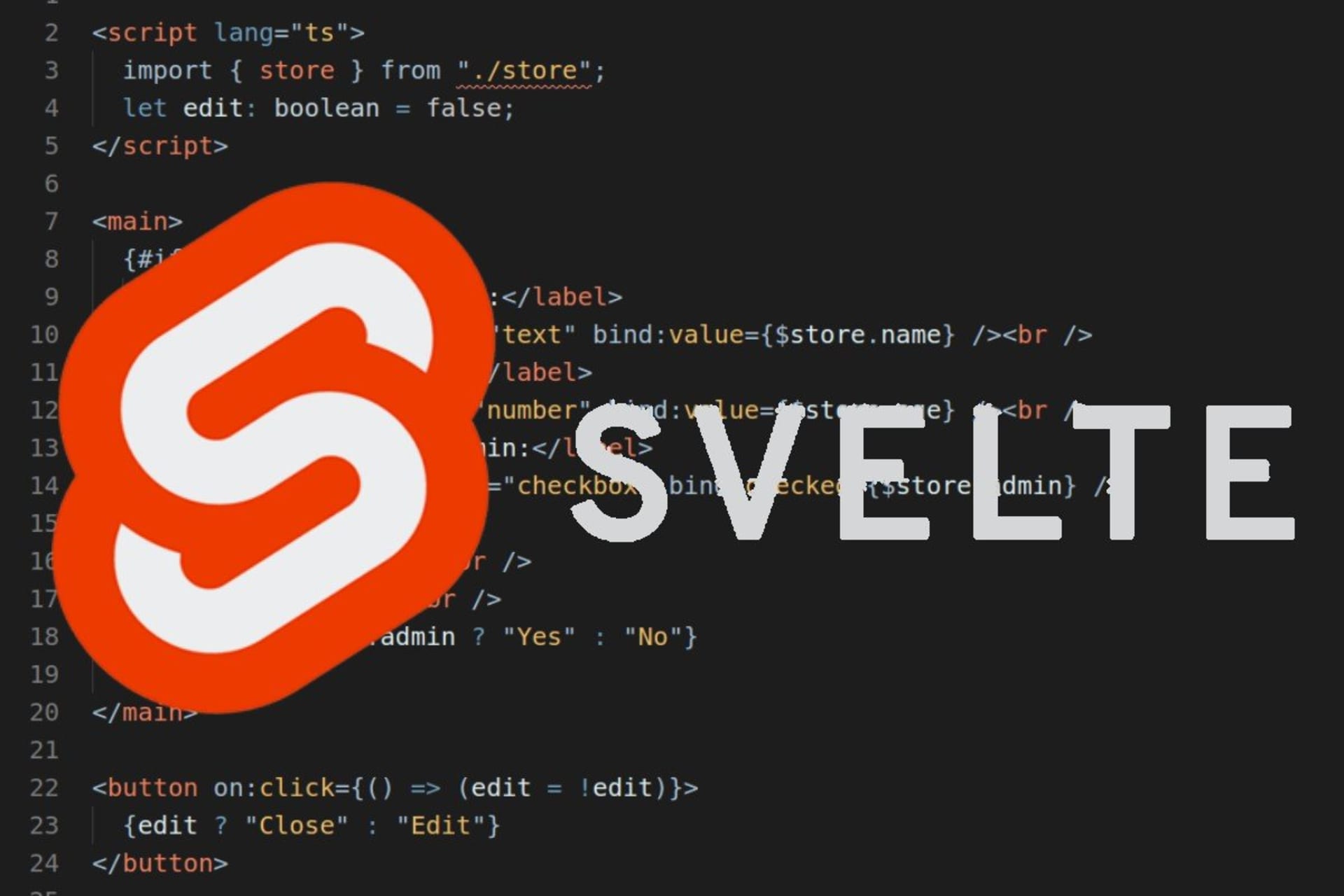In the world of frontend development, it seems there’s a brand new “must-have” tool popping up every day. Some of those tools do wind up being fairly important in the software development lifecycle for businesses, while others fade away over time, to never be remembered.
One aspect of frontend development that sees a never-ending supply of new tools is frameworks. No matter what language you use, there are multiple frameworks ready to serve. Some of those are very useful, while others are redundant at best.
Such is the case with JavaScript. The reason why there are so many JavaScript frameworks available is simple enough, as JavaScript is one of the most used languages on the planet. Because JS is considered a must for interactive applications and websites, it’s a language that’s on everyone’s mind. Ergo, there are plenty of frameworks available.

One such JavaScript framework is Svelte. One of the primary goals of Svelte is to help developers create reactive applications. What is a reactive application? Any time a value is changed within an app (such as when a user inputs data), that value will be automatically reflected in the Document Object Model (DOM). The DOM is a logical tree structure that represents an HTML page displayed in a browser or an app.
Reactive apps are critical for today’s modern use-cases, as they make it possible for portions of a web page or app to be updated without the entire page having to be refreshed. This is a dramatic departure from the old way of doing things (where to update any section of a page or app, the entire thing must be loaded again).
And so it goes that every developer who uses JavaScript is focused on developing reactive frontends.
Svelte takes a very different approach to this. To put it in simplest terms, Svelte compiles your code at build time, so only pure JavaScript that modifies the DOM can make it to the browser. This functionality goes a long way to remove the framework by the time application code makes it to the browser.

This means the components of a Svelte app (such as HTML, CSS, and JavaScript files) are combined into .svelte files, the DOM is always in sync with your app state, apps are compiled into tiny, framework-less JavaScript at build time, and it can be used to develop standalone apps, or be used in conjunction with another app. All of this combines to make for incredibly fast JS applications.
Advantages of Svelte
The advantages of Svelte should already be apparent. But there’s more. By adopting this new framework, your developers will experience certain advantages over other tools. Those advantages include:
- Less boilerplate code to write, so your developers can focus on creating solutions.
- Reactive variables can be easily created by simply adding $: at the beginning of the declaration.
- No more virtual DOM, so apps perform faster and more reliably.
- Instead of CSS, developers use scoped styling with JavaScript, which allows them to include styles mid-document that target a specific element and its children.
- Includes its own minimal state management solution.
- Zero traces of the framework within the compiled applications.
- Svelte applications run significantly faster than with other frameworks.
Disadvantages of Svelte
There are, however, a few disadvantages of adopting Svelte, which include:
- A much smaller community than other frameworks.
- No major support as of yet.
- Lack of IDE support.
- Few Svelte dev toolkits are available.
- Very small open-source ecosystem.
If your developers can do their work without requiring much in the way of support, Svelte would be a great option for them to build highly reactive applications. If, on the other hand, they do tend to lean on support and community quite a bit, Svelte might not be the best option (yet). Give the framework time, however, and a community will develop around the tool.
What can you build with Svelte?
Svelte can be used to build small pieces of an application or the entire application itself. Where you will get the most out of this framework is building fast web applications that include slick interfaces. If that’s what your business is looking to lean into, Svelte might well be the framework you need.
For your developers to get started with Svelte, they’ll need a basic understanding of HTML, CSS, and JavaScript. And that’s it. With those skills, your dev teams are already prepared to start building with Svelte. And with the help of an easy-to-use tutorial, they will be up to speed in no time.

Take this simple Hello, World application, written with Svelte that looks like this:
<script>
let name = 'world';
</script>
<h1>Hello {name}!</h1>
It’s that simple.
Conclusion
Svelte is an exciting new approach to JavaScript, capable of creating incredibly reactive and fast applications. If you’re looking to help your developers take your website or web apps to the next level of performance and simplicity, Svelte should be on your horizon.






